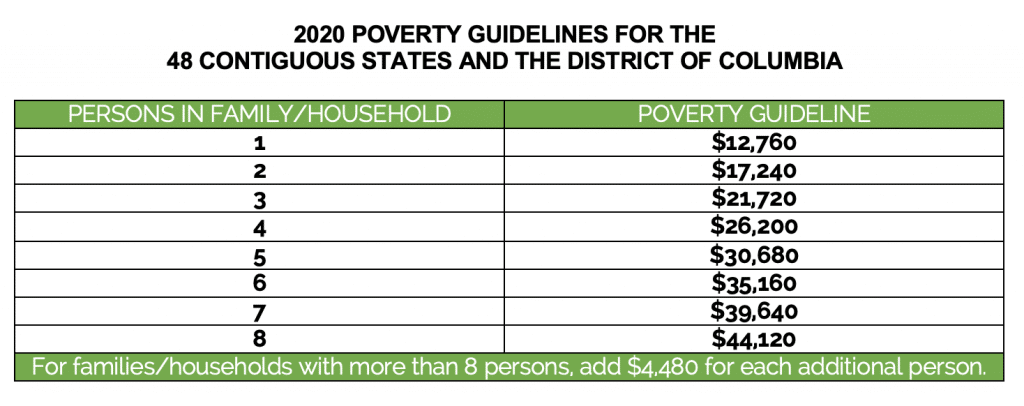Federal Poverty Guidelines: 2020 Release and Proposed Changes
The 2020 poverty guidelines were released and published in the Federal Register with an effective date of January 14, 2020.
Payers and Providers wait for the release of the poverty guidelines each year to update patient financial assistance and eligibility information within their systems and forms. Controversy has surrounded the poverty guidelines and, more directly, the poverty thresholds since a notice proposing changes was posted on May 7, 2019.
The poverty thresholds are the original version of the federal poverty measure. They are updated each year by the Census Bureau. The thresholds are used mainly for statistical purposes. All official poverty population figures are calculated using the poverty thresholds.
Poverty guidelines are a separate federal poverty measure. They are issued each year in the Federal Register by the Department of Health and Human Services (HHS). The federal poverty guidelines (FPG) are a simplification of the poverty thresholds, primarily for administrative use, like determining income eligibility for needs-based programs. Such programs include, but are not limited to, Medicaid, Children’s Health Insurance Program (CHIP, Supplemental Nutrition Assistance Program (SNAP), and Marketplace subsidies.
Consumer Price Index
The official poverty thresholds are updated annually for inflation using the Consumer Price Index published by the U.S. Bureau of Labor Statistics (BLS). “The Consumer Price Index (CPI) is a measure of the average change over time in the prices paid by urban consumers for a market basket of consumer goods and services,” according to the BLS. The all urban consumer group represents about 93 percent of the total U.S. population.
Two indexes are used to measure inflation for all urban consumers.
- Consumer Price Index for All Urban Consumers (CPI-U)
- Chained Consumer Price Index for All Urban Consumers (C-CPI-U)
Consumer Price Index for All Urban Consumers (CPI-U)
The CPI-U is currently in use for the Census Bureau’s annual poverty thresholds update. It is also the one most often used in the media. The weights assigned to the goods and services used in this index are based on expenditure surveys that are lagging by a few years, one of the drawbacks. The CPI-U is considered final when first issued.
Chained Consumer Price Index for All Urban Consumers (C-CPI-U).
The C-CPI-U has been proposed to replace the CPI-U for poverty threshold updates. The C-CPI-U more closely reflects current consumer behavior and spending. It uniquely captures and reflects how consumers respond to changes in relative prices, say beef and chicken for example. The C-CPI-U is designed to be a closer approximation of the cost of living index than the CPI-U.
However, there is a limitation.
The C-CPI-U is subject to four quarterly revisions after it is first issued. A final version is not published until one year later. The drawback that concerns CPI-U advocates is that over time the C-CPI-U tends to increase at a slightly lower rate than other measures of consumer inflation, negatively impacting downline measures that rely on CPI.
Consider the following. The CPI impacts the poverty threshold which in turn impacts the poverty guidelines and, ultimately, eligibility for needs-based programs like Medicaid, CHIP, SNAP, Marketplace subsidies and others.
The “Consumer Inflation Measures Produced by Federal Statistical Agencies” notice, outlining the proposed change from CPI-U to C-CPI-U, was issued by the Office of Management and Budget (OMB) and published for public comment on May 7, 2019. A total of 57,127 comments were received. A final notice has not been published as of this writing.
Below is a table of the NEW 100 percent of federal poverty guidelines. Other guidelines can be easily calculated using multiplication. For example, 138 percent can be obtained by multiplying 1.38 by the 100 percent number for the family size needed.
Resources
- Poverty Guidelines, Office of the Assistant Secretary for Planning and Evaluation (ASPE), U.S. Department of Health & Human Services, January 2020, https://aspe.hhs.gov/poverty-guidelines
- About, Census.gov, https://www.census.gov/topics/income-poverty/poverty/about.html
- How the Census Bureau Measures Poverty, Census.gov, https://www.census.gov/topics/income-poverty/poverty/guidance/poverty-measures.html
- Guidance for Data Users, Census.gov, https://www.census.gov/topics/income-poverty/poverty/guidance.html
- Consumer Price Index, U.S. Bureau of Labor Statistics, https://www.bls.gov/home.htm
- Consumer Inflation Measures Produced by Federal Statistical Agencies, Notice document issued by the Office of Management and Budget (OMB), May 7, 2019, https://www.regulations.gov/document?D=OMB_FRDOC_0001-0248

